The Red Haired Woman
Orhan Pamuk
|
|
Sophocles’s Oedipus meets Ferdowsi’s Rustam and SohrabGrowing up in Lahore of 1970s when I was in college, nothing could have prepared us for the invasion of Russian literature on the the footpaths of Regal Chowk and New Anarkali. Fed up with British novels of Bronte sisters and Dickinson, reeking of Victorian stale romanticism, Russian literature hit us as something fresh as well as mentally challenging in Dostoevsky’s psychosis and Tolstoy’s philosophy without abandoning romance in classical sense. Reading “The Red Haired Woman” I suspect that Turkish nobel laureate Orhan Pamuk, who happens to be our contemporary, must have gone through the Russian literature with same awe. In fact during his student days he did spend his lazy Saturdays in book bazaar behind Istanbul University. Not far away from Beyazit Square – roughly comparable to Lahore’s Neela Gunbad – where the Turkish Army chased and killed students and protesters in 1960s and 1970s.
He acknowledges that “The Red Haired Woman” was heavily influenced by his own sense of an absent father. “My father would disappear, like the father in The Red-Haired Woman, and most of the time I was happy and unhappy about it. I was happy because my mother was left only to me and my brother.” The unhappiness, he says, was because “at those moments in my life I needed a father, a father’s presence”. *** The novel structurally is divided into three titled parts following the story in linear chronology. Part One narrates the month-long coming of age life of Cem sometime in 1980s when he spends a summer working as a well-digger’s apprentice in a town of Öngören close to Istanbul. Like Pakistan, Turkey had just experienced yet another military coup. The master well-digger, the devout Mahmut, becomes a surrogate father to Cem who recounts Koranic parables to him in the evenings. Both master and his disciple spend evening in the town cafe at the end of each day. That is where young Cem sees red-haired woman (named Gülcihan somewhat similar to Gulshan in Pakistan) and immediately falls in love with her. The red-haired woman is a actress in a travelling theater troupe. A left-leaning leaning woman, she is open minded, gay, and a happy soul. Predictably Cem loses his virginity to her and unknowingly an Oedipal triangle is created as Cem’s father was once upon time a lover of the red-haired woman. These few weeks in this part park of the book are easily the most beautiful part of the story easily relatable to Turgenev’s countryside story in “Fathers and Sons”. For days and days there is a lull of predictable moontony. Days are filled with well-digging where Master Mahmut trains Cem in the art of well digging and essential qualities and practices that lead to successful discovering and excavation water in a serene leisurely countryside. During the interludes of simple Turkish lunch of bread, white cheese, and watermelon ancient fables are exchanged. For young Cem, Master Mahmut becomes his spiritual father. Evenings are occupied with cafe visit, meeting with the leading town figures. There is a theater troupe in the town and a red-haired woman is its main actress. Young Cem is struck by her beauty and immediately falls in love. In traditional Turkish cafes alcohol based anis-flavored Raki is a traditional drink among all classes. Mustafa Kemal Ataturk is said to have died from the effects of overindulgence in raki. For Cem Raki works as a fuel that sustains his obsession with the red-haired beauty. That is, until one night when she invites him for a drink and takes him home for the night while her husband is away. A few days later an accident happens at the well and young Cem abandons his master Mehmet alone trapped in the well. These two events – of first time making love and abandoning his father-like master Mahmut – will mark him forever. — Part Two follows Cem’s life as a successful geological engineer and eventually as a real estate mogul. In real estate empire he is accompanied by wife as they are unable to have children. The couple eagerly dwells into to the world of art especially in the Eastern story of Rostam/Sohrab in Persian Shahnameh and Western myths of Greek Oedipus. They even name their construction company as Sohrab – the Shahnameh hero who is fated to be killed by his father Rustam. His company expands to the old village Öngören where he spent his summer as a teen apprentice of well digger 30 years ago. He comes to know that he has a son by the red-haired actress. This gives Cem a chance to see the red-haired woman again, and his son, Enver, for the first time. Enver is an angry young man who hates his father for abandoning him. As an Islamist of the modern Erdogan era he mocks liberal and secular ways of his father. Eager to meet and acquaint himself with his son Enver, Cem arranges a fateful meeting with his son close to the old well. In a climactic and melodramatic scene borrowed from a film noir, father and son have a heated ideological argument that ends up in a brawl right at the mouth of the symbolic “well”. The brawl leads to life-and-death melodrama and ensuing suspense over the result – whether it will end in patricide or filicide. At the end Cem is killed by his own son in a manner befitting the Greek King Oedipus. —
Gülcihan’ character is complicated as Sylvia Plath’s Lady Lazarus who comes out as “Out of the ash/ I rise with my red hair/And I eat men like air”. This last is composed of a mother’s visits to her son Enver in jail where he is waiting for the murder of his father Cem. Neither a spectacular red haired beauty nor a conniving old woman, she consoles her son and forces him to write his memoirs that become the book itself. *** Pamuk seems to be be obsessed by all-consuming characters veering towards death. In “Museum of Innocence” its main character literally veers car to death at the end of a long slow burning and agonizing all-consuming love affair with a man who has eerie similarities with the author’s own life.
“we men want to kill our fathers and sleep with our mothers. It is an essential stage in our psychosexual development”. Or so Freud told us.
Pamuk’s cliched metaphors (at least in English translation) can be annoyingly stale. “the Red-Haired Woman’s body was better than anything I had imagined,” If occasion came, every 16 years boy on earth would willingly rise to that literary epiphany. In the literary world “The Red Hair Woman” is not considered as Pamuk’s major work. For his fans, it is another enchanting tale not to be missed. Amanullah |

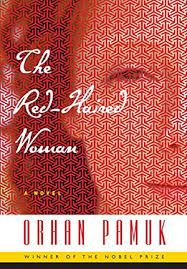
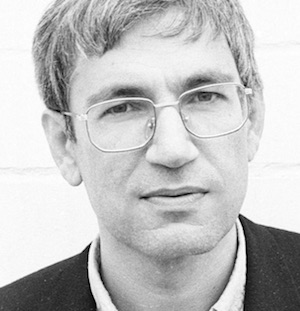 Pamuk himself points to Turgenev works specially “Fathers and Sons” (Rahat Kazmi turned it into a Pakistan TV play aptly named ‘Qurbatain aur Faaslay’ in 1974) and “First Love” where the young hero falls in love with an older woman who turns out to be his father’s mistress. “Turgenev influenced all my works, fathers and sons in the end” Pamuk eagerly stressess.
Pamuk himself points to Turgenev works specially “Fathers and Sons” (Rahat Kazmi turned it into a Pakistan TV play aptly named ‘Qurbatain aur Faaslay’ in 1974) and “First Love” where the young hero falls in love with an older woman who turns out to be his father’s mistress. “Turgenev influenced all my works, fathers and sons in the end” Pamuk eagerly stressess.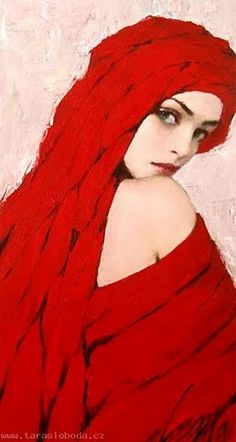 Part Three is narrated by Gülcihan, the red-haired woman herself. In patriarchal and conservative Turkey a vocal and liberal woman is rare. As much as Cem, Gülcihan is novel’s protagonist. As much as her red hair, her liberal ideals and her passion for reenacting ancient fables in solo theatrical performances make her role exceptional. She represents Ataturk liberalism and Turkish quest for its place in Europe. Yet like her country now her young son is religious and rebellious in his own way.
Part Three is narrated by Gülcihan, the red-haired woman herself. In patriarchal and conservative Turkey a vocal and liberal woman is rare. As much as Cem, Gülcihan is novel’s protagonist. As much as her red hair, her liberal ideals and her passion for reenacting ancient fables in solo theatrical performances make her role exceptional. She represents Ataturk liberalism and Turkish quest for its place in Europe. Yet like her country now her young son is religious and rebellious in his own way.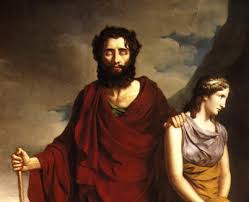 The principal character is Cem oscillates between Sophocles’s Oedipus and Ferdowsi’s Rustam and Sohrab. Patricide and filicide becomes an obsession for
The principal character is Cem oscillates between Sophocles’s Oedipus and Ferdowsi’s Rustam and Sohrab. Patricide and filicide becomes an obsession for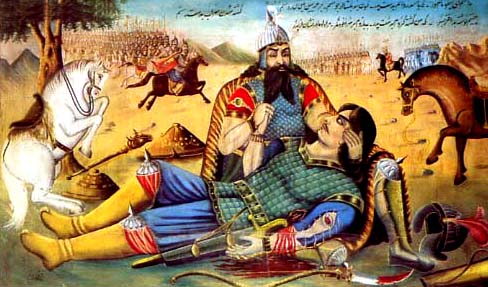 In modern oriental novel Orhan Pamuk occupies a unique place. Just like his motherland, Pamuk himself is both divided by and devoted to both eastern and western literary tradition.
In modern oriental novel Orhan Pamuk occupies a unique place. Just like his motherland, Pamuk himself is both divided by and devoted to both eastern and western literary tradition.